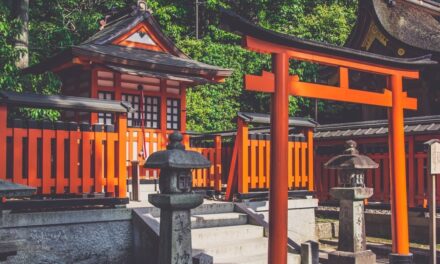Buddhism is a spiritual tradition founded by Siddhartha Gautama (the Buddha) around the 5th century BCE. It focuses on personal spiritual development, the search for enlightenment, and the end of suffering.
Key Beliefs
- The Four Noble Truths:
- Life is suffering (Dukkha).
- Suffering is caused by desire (Tanha).
- Ending desire ends suffering.
- The way to end desire is the Eightfold Path.
- The Eightfold Path: The path to enlightenment and ending suffering.
- Right Understanding
- Right Thought
- Right Speech
- Right Action
- Right Livelihood
- Right Effort
- Right Mindfulness
- Right Concentration
- Karma: Actions have consequences, which affect one’s future in this life and the next.
- Reincarnation (Samsara): The cycle of birth, death, and rebirth until enlightenment is reached.
- Nirvana: Liberation from the cycle of suffering and rebirth, ultimate spiritual enlightenment.
Sacred Texts
- Tripitaka (Three Baskets): The oldest Buddhist scriptures, written in Pali and Sanskrit.
- Sutras: Discourses attributed to the Buddha, including teachings on ethics, meditation, and wisdom.
- Dhammapada: A collection of sayings of the Buddha, often used for guidance and inspiration.
Major Branches
- Theravada Buddhism:
- The oldest and most traditional form.
- Focuses on individual enlightenment through monastic life and meditation.
- Predominantly practiced in Sri Lanka, Thailand, and Burma.
- Mahayana Buddhism:
- Emphasizes the Bodhisattva path, helping others achieve enlightenment.
- Introduced new texts and practices.
- Found primarily in East Asia (China, Japan, Korea).
- Vajrayana Buddhism:
- Focuses on esoteric practices and rituals to reach enlightenment faster.
- Associated with Tibetan Buddhism and the Dalai Lama.
Core Practices
- Meditation: Central to Buddhist practice, aimed at achieving mindfulness, insight, and mental clarity.
- Mindfulness: Being fully present in the moment, a key practice in everyday life.
- The Middle Way: Living a balanced life between extreme self-indulgence and extreme asceticism.
- Ethical Conduct: Following moral principles such as non-violence, truthfulness, and compassion.
Major Holidays
- Vesak: Celebrates the birth, enlightenment, and death of the Buddha.
- Asalha Puja: Marks the Buddha’s first sermon and the establishment of the Buddhist Sangha (community).
- Magha Puja: Honors the day when 1,250 disciples gathered spontaneously to hear the Buddha speak.
Symbols
- Dharma Wheel: Represents the Buddha’s teachings and the Eightfold Path.
- Lotus Flower: Symbolizes purity, spiritual growth, and enlightenment.
- Bodhi Tree: The tree under which the Buddha attained enlightenment.
- Buddha Statues: Depict the Buddha in various poses, symbolizing different teachings and states of mind.
Places of Worship
- Monasteries: Centers for study, meditation, and living for Buddhist monks and nuns.
- Stupas: Sacred structures housing relics of the Buddha or other revered figures.
- Temples: Public places for worship and offering, often featuring Buddha statues and meditation spaces.
- Pilgrimage Sites: Key sites related to the Buddha’s life, such as Bodh Gaya (where he attained enlightenment) and Lumbini (his birthplace).
Key Figures
- Siddhartha Gautama (The Buddha): Founder of Buddhism, achieved enlightenment under the Bodhi tree.
- Bodhisattvas: Enlightened beings who delay their own Nirvana to help others reach enlightenment (important in Mahayana Buddhism).
- Dalai Lama: The spiritual leader of Tibetan Buddhism and a symbol of peace and compassion.
Paths to Enlightenment
- The Path of the Arhat: In Theravada, the individual journey to Nirvana.
- The Bodhisattva Path: In Mahayana, the journey to help others attain enlightenment before oneself.
- Tantric Practices: In Vajrayana, special rituals and meditative practices to speed up enlightenment.
The Buddhist Way of Life
- Non-Attachment: Letting go of material desires and attachments to achieve spiritual freedom.
- Compassion (Karuna): Showing kindness and empathy to all living beings.
- Ahimsa: Non-violence toward all creatures, a core ethical value.
- Mindful Living: Applying Buddhist teachings in daily life, promoting peace and contentment.
History of Buddhism
- Origins: Founded in the 5th century BCE in India by Siddhartha Gautama.
- Spread: Buddhism spread through Asia, adapting to different cultures, with major influence in Southeast Asia, China, Japan, and Tibet.
- Modern Buddhism: Today, Buddhism is practiced globally, with various modern interpretations focusing on mindfulness and personal spiritual growth.





